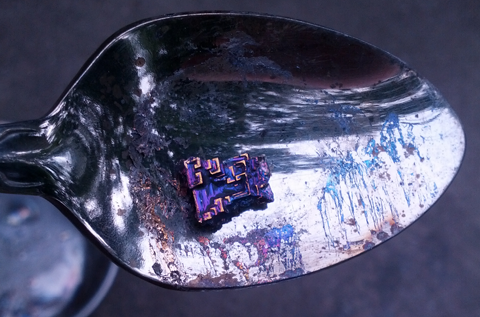Metallurgical Magic

September 9, 2015
Like the rainbow swirls of a soap bubble, bismuth’s otherworldly sheen comes from thin-film interference, thanks to the nanometers-thick transparent oxide layer on its surface. Some photons are reflected from the top of this oxide layer, but others travel through it before reflecting off the surface of the metal. Since they travel an extra distance, these photons are in a different phase than the ones reflected off the top, but if that phase difference is an integer number of wavelengths, the two end up right back in phase again, creating a brighter reflection than they would if they were out of phase. Because light’s color depends on its wavelength, thin films create surfaces where one color of light is reflected far more intensely than others.














